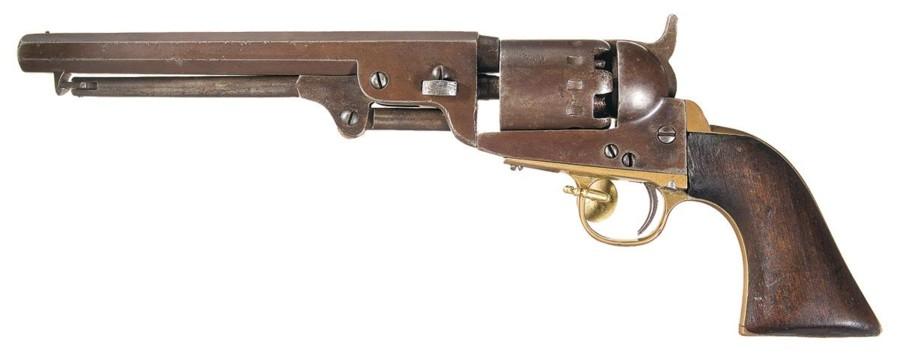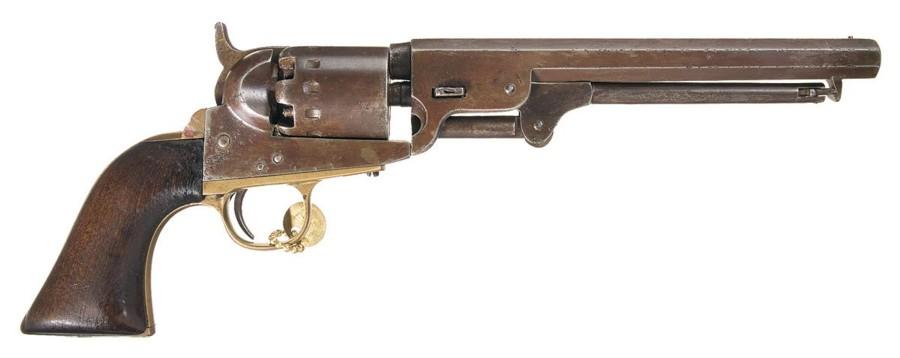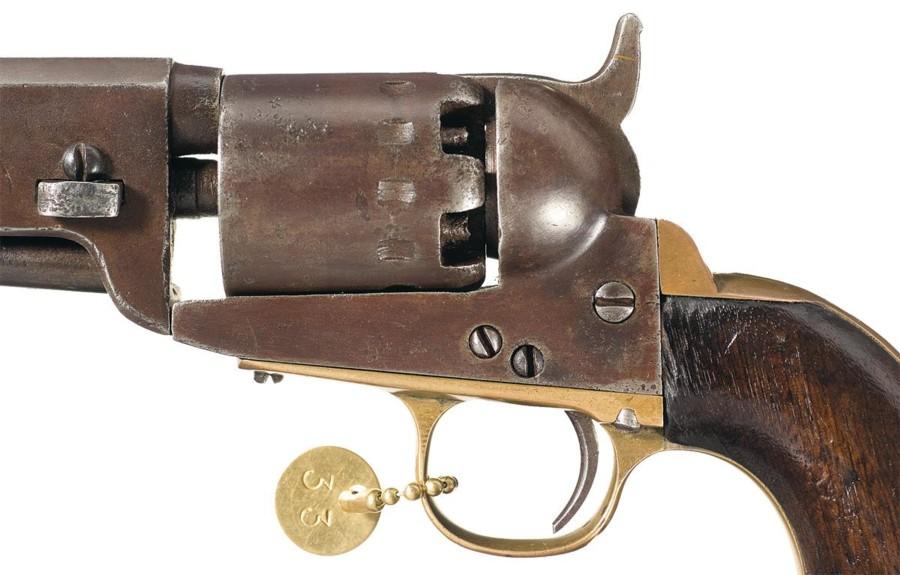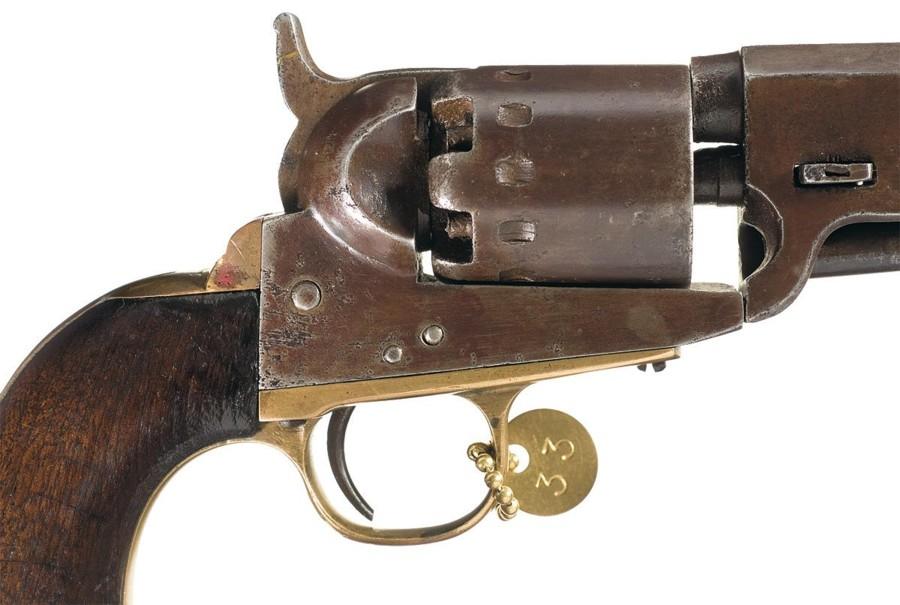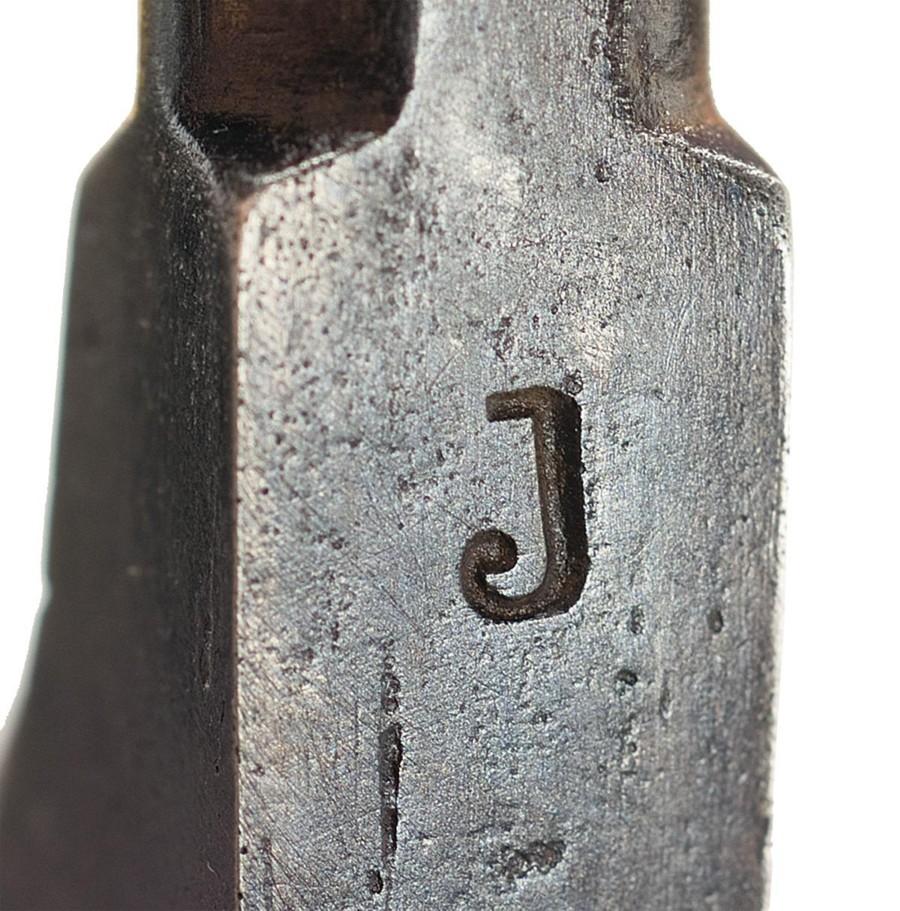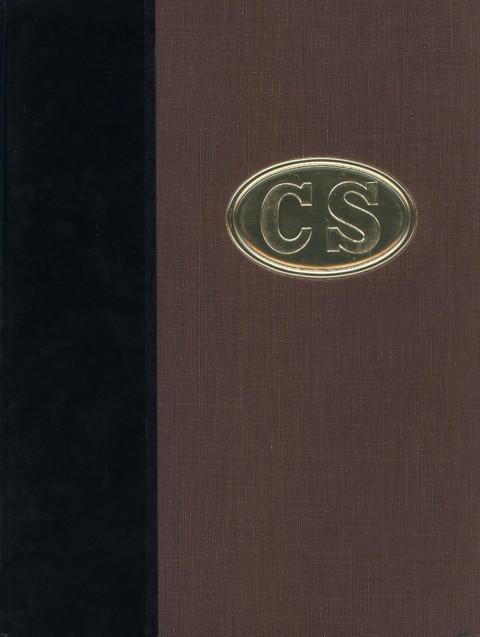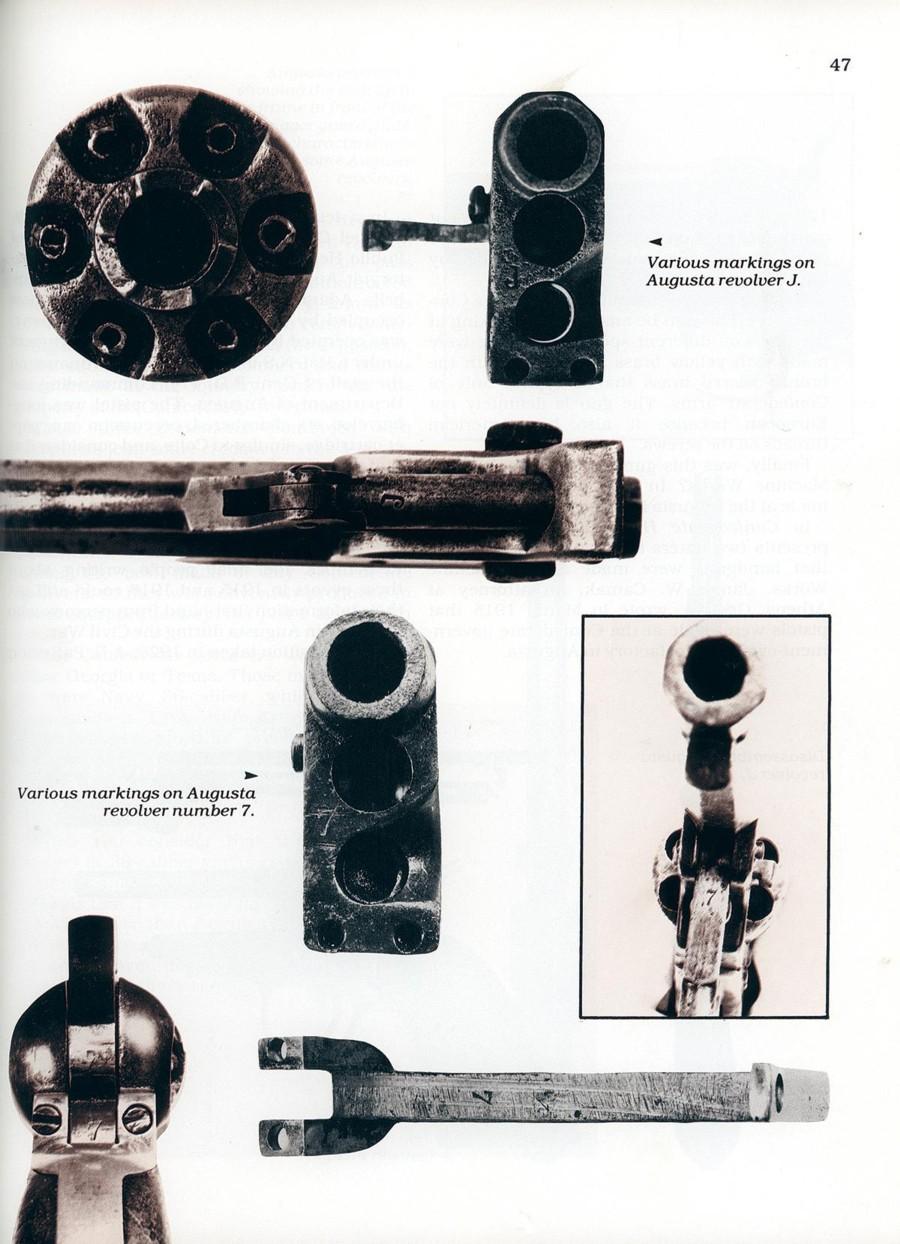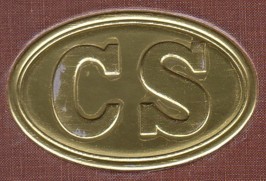

|
Georgia-made revolvers
|
AUGUSTA MACHINE WORKS
Among the revolvers made in the Confederacy, the one said to have been produced by the Augusta Machine Works is somewhat mysterious. Since it is not marked with any maker's name, some collectors wonder if the gun has really been made by that factory; others even question whether any revolver has been manufactured by that factory.
It is a fact that the Confederate Government owned a factory at Augusta, Georgia, known as the Augusta Machine Works; but what kind of military materials it produced has never been established.
Other questions arise, as to whether 6-stop and 12-stop revolvers were made there. Were they produced at the same factory, and if yes, why that difference?
Some people even wonder whether these revolvers are really of Confederate origin...
THE AUGUSTA MACHINE WORKS REVOLVER
Like so many Confederate revolvers, this one is also a close copy of the Colt Navy 1851, with the same octagonal barrel, a brass trigger guard and back strap, and a Colt Navy-type loading lever catch.
The rifling has six lands and grooves, slight clockwise, with no gain twist. The trigger guard has a deep oval shape, the hammer spur is finely checkered; the hammer has a roller and the wedge has a spring.
Specimens are known with a 6-stop cylinder and others with a 12-stop cylinder. The 6-stop cylinders have safety pins between the nipples, and a slot in the hammer head.
Most internal parts bear assembly numbers, but the revolvers have no serial numbers. the assembly numbers, sometimes letters, have been stamped with very large dies for a handgun.
Judging from the few revolvers still in existence today, the estimation is that about half of the guns were marked with assembly numbers, the other half with letters; also about fifty percent have the 12-stop cylinder, the rest having the 6 stop cylinder.
The lack of any serial numbers makes the estimation of the total production very difficult; yet comparison with the Colombus revolver, of which is known that only about 100 have been produced, and considering that there are more Augusta than Colombus revolvers surviving today, one can assume either that more than 100 Augusta were made, or that the end of the war was near so that they did not suffer long and hard use, thus the higher survival rate.
It is absolutely certain that both 6 and 12 stop revolvers are of the same origin; machine-tools have left the same traces on them. Why the two systems were made, remains unknown.
The revolvers were obviously manufactured in the Confederacy, for the brass parts of some of them show the pink colorations dues to excessive copper content in the brass alloy, which is typical only on Confederate arms. Also the American threads on the screws prove the guns are not of European origin.
An absolute evidence of production of these revolvers by the Augusta Machine Works has not been found yet; but a letter written in 1918 by Wilson, secretary, Department of Public Health, states that the Confederate Government had a factory at Augusta, located between the Jackson, Campbell, Adams and d'Antignac streets during the war. The factory was operated by a Major Finney, and produced a percussion cap revolver, similar to Colt's, and considered as one of the best made in the Confederacy.
There are more of these revolvers in collections today, than any other unmarked or unidentified Confederate revolvers. Their excellent quality proves they were manufactured in a well-equipped factory by skilled workers.
Most Confederate revolvers were manufactured in Georgia and Texas. Those made in Georgia were of .36 calibre, while the most Texas ones were of the .44 calibre, preferred by the Texan troopers as well as the Indians. So it is most probable that this revolver was manufactured in Georgia, and if so, where else than in Augusta? Until a conclusive proof is found, Augusta Machine Works remains the best bet anyway.
Marcel
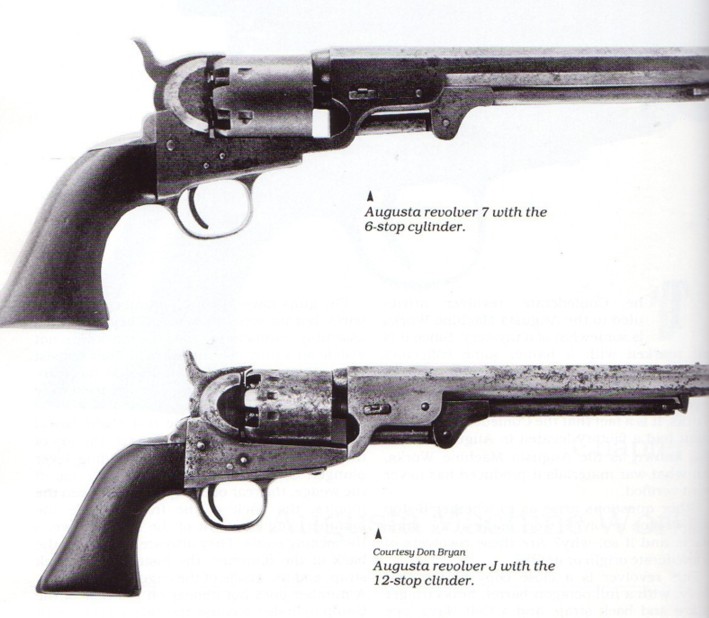
Colt 1851 Augusta
Rare Confederate Augusta Machine Works Percussion Six-Notch Style Revolver with Historic Confederate Inscription
Known as the Revolver of Colt Model 1851 Navy type, these rare Confederate revolvers were manufactured circa 1861 to 1864 with a total production of only about 100 and only a few are known today. These revolvers were very well made and (like most Confederate revolvers) are almost identical in appearance to the Colt Model 1851 Navy revolvers. Among the revolvers made in the Confederacy, the ones said to have been made by the Augusta Machine Works are somewhat mysterious. They are not marked with a markers name and some question if the gun was made by the factory or if any revolver were even manufactured by Augusta Machine. The Confederate Government did own a factory in Augusta, Georgia which was known as the Augusta Machine Works, but what military weapons were produced has never really been established. This particular revolver is period inscribed "H Canning" on the backstrap. Research into H. Canning shows that he served on the Confederate ship C.S.S. Shenandoah and was listed as a crew member on November 6, 1865 when the Commanding Officer Lieutenant James L. Waddell surrendered the ship to the British Government for the United States. The C.S.S. Shenandoah was formerly the Sea King, a British transport. The Confederate Government purchased her in 1864 for use as an armed cruiser. It was commissioned October 19, 1864. The Shenandoah fired the last shot of the American Civil War off the Aleutian Islands and by the time she was done sailing she had covered 58,000 miles making it the only time the Confederate flag traversed the globe. The revolver has the following markings: "24" on the loading lever and inside of the recoil shield, "2" on the back of the cylinder and a "1" stamped on the inside of the front strap, backstrap and grip. The barrel is fitted with a small brass blade front and fixed notch rear sights and the hammer has a large "V" cut sighting groove and the spur is checkered. The cylinder has six stops, (about half of the Augusta revolvers had 12 stops and the rest 6) and safety pins between the nipples, which were found on the six stop variation. These revolvers were finished brown with the brass trigger guard and backstrap left bright and fitted with one piece smooth walnut grips. The grips on these revolvers were of two styles, one thick and bulging and the other slimmer in style, which is the case on this revolver. The revolver is complete with a hand written letter dated 7/14/1997 from Donald Ball of American Heritage Investment Inc. briefly describing the revolver and stating that "The above described revolver appears to be a Augusta, Ga. Production similar to other known examples." The letter also states that this revolver was once in the David Cline Collection
Many thanks to "Rock Island Auction" for the nice pictures.
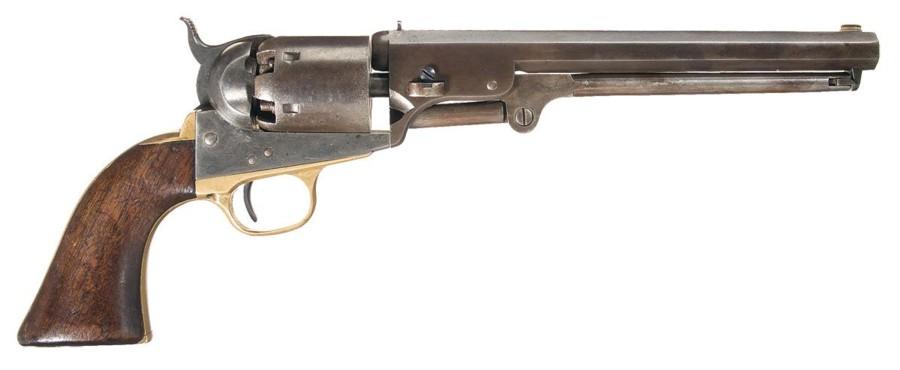
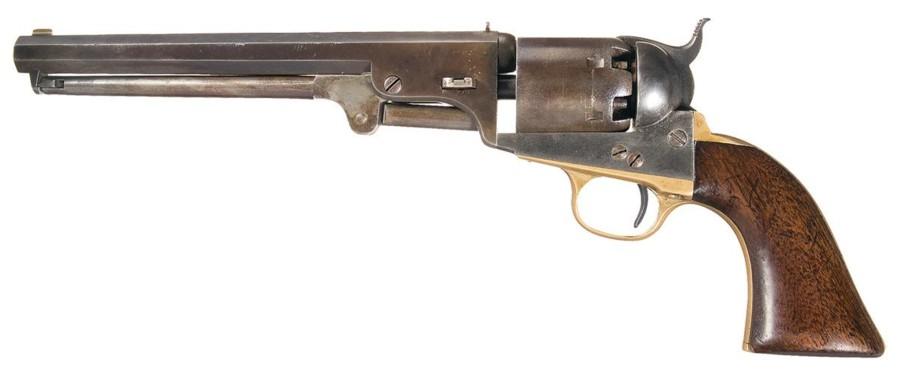
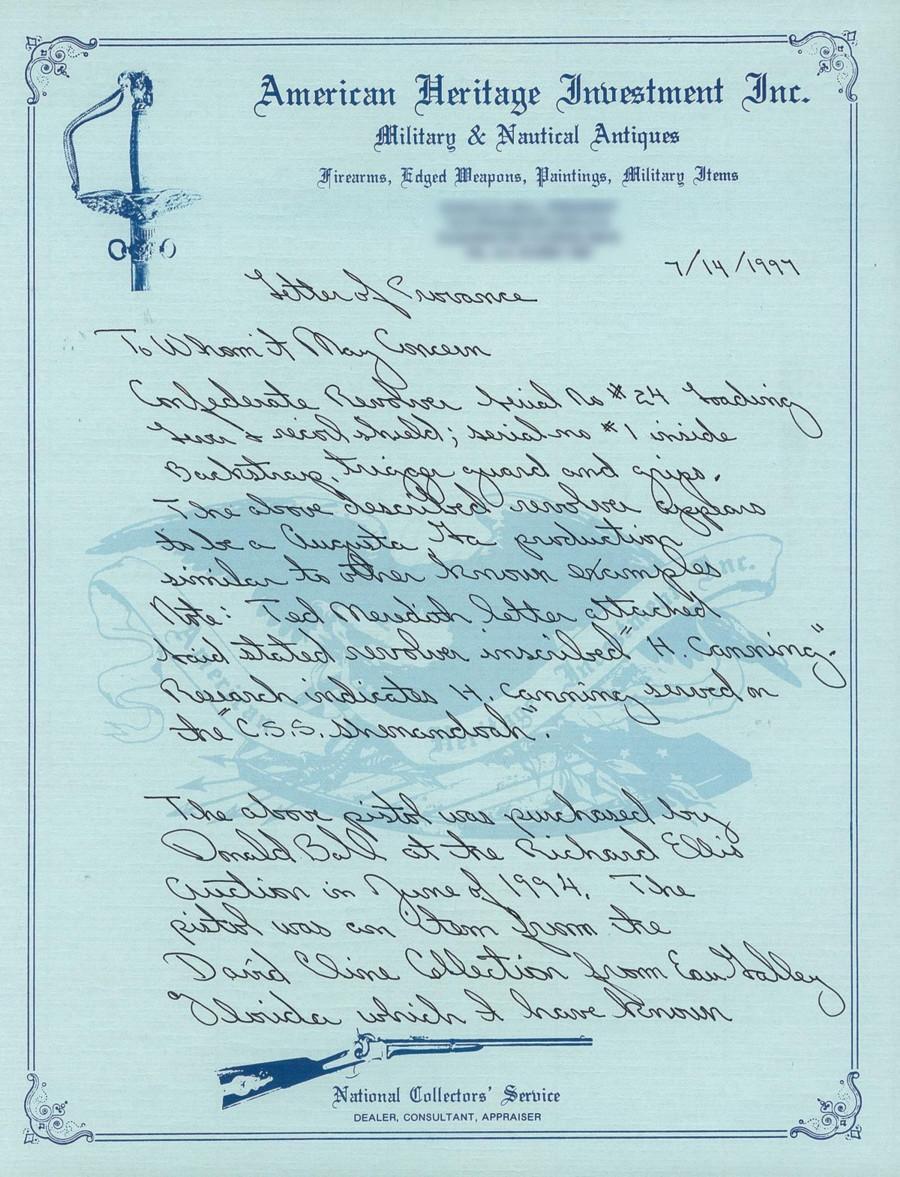
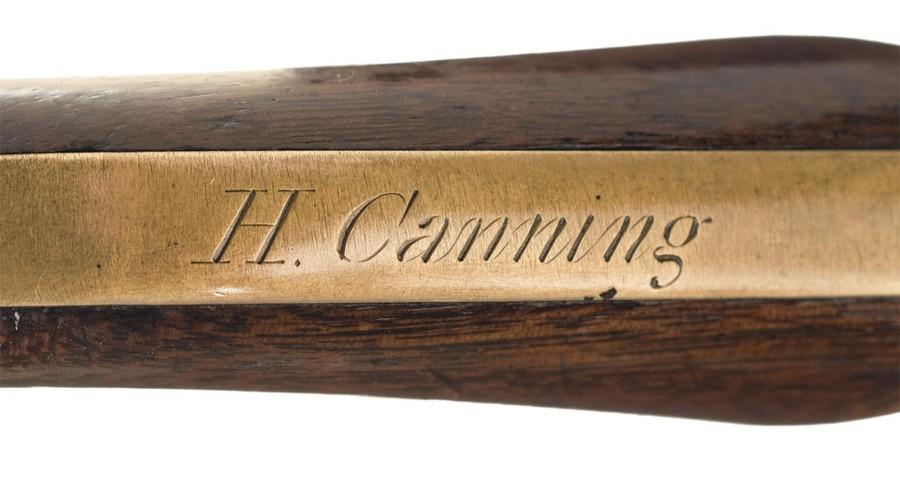
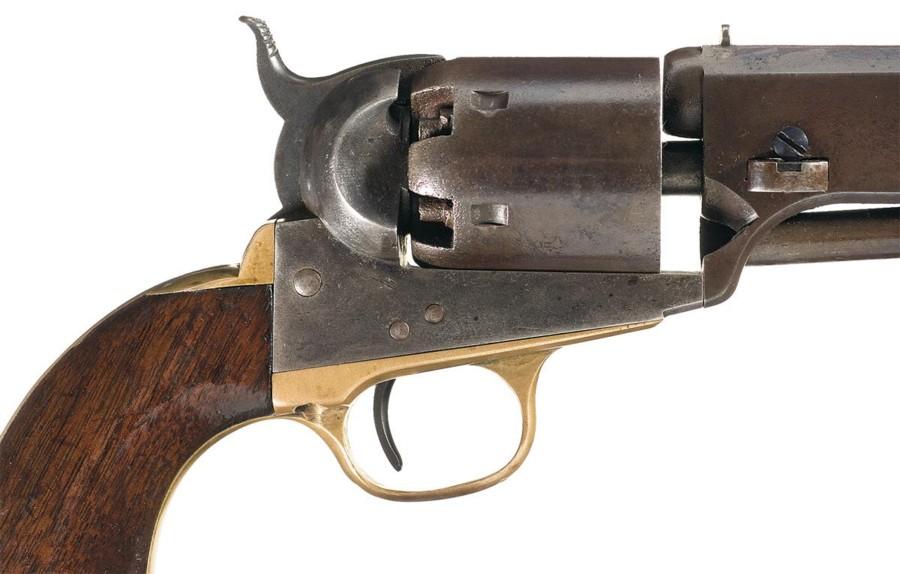
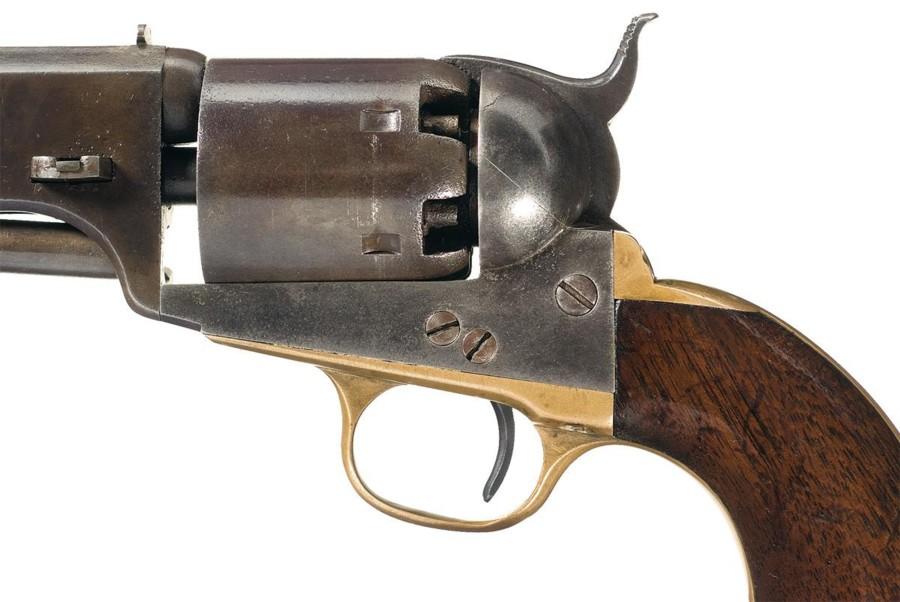
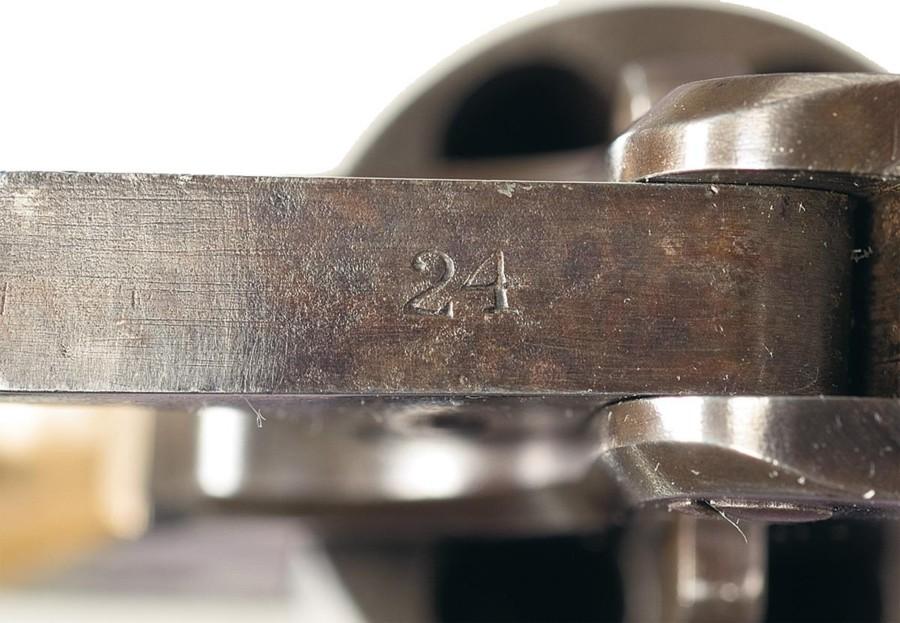
Colt 1851 Augusta
Extremely Rare Documented Confederate Augusta Machine Works Percussion Twelve-Notch Style Revolver
Known as the Revolver of Colt Model 1851 Navy type, these rare Confederate revolvers were manufactured circa 1861 to 1864 with a total production of only about 100 and only a few are known today. These revolvers were very well made and (like most Confederate revolvers) are almost identical in appearance to the Colt Model 1851 Navy revolvers. Among the revolvers made in the Confederacy, the ones said to have been made by the Augusta Machine Works is somewhat mysterious. They are not marked with a markers name and some question if the gun was made by the factory or if any revolver were even manufactured by Augusta Machine. The Confederate Government did own a factory in Augusta, Georgia which was known as the Augusta Machine Works, but what military weapons were produced has never really been established. The revolver has a full octagon barrel, brass trigger guard and backstrap, and a Colt Navy type loading lever catch. These revolvers were marked with either numbers or letter for assembly markings. This particular revolver is marked with a "J" on the loading lever, wedge, rear of the cylinder, on the back of the barrel lug, on top of the plunger, on the inside of the trigger guard plate and on the inside of the backstrap. There were two variations of cylinders, one with six stops and the other (approximately half) 12 stops. This revolver has the 12 stops and correctly made without safety pins between the nipples. The revolver is equipped with a brass post front sight and a notch in the hammer head serves as the rear sight. The hammer is smooth and has a unique design with a shorter spur that goes almost straight up and down when in the decocked position Fitted with smooth one piece walnut grips This particular revolver is mentioned as one of two "J" marked 12 stop revolvers known and photographs showing three "J" marked parts and profile of the gun on pages 45-47 in Gary's book "Confederate Revolvers". There is also an original email correspondence with the consignor dated August 30, 2006 from a Damon Mills stating that he (Mr. Mills) looked at the revolver in detail and is comfortable that the gun is authentic. Mr. Mills states that he had traced the gun through three owners since 1947. The correspondence makes reference to the revolver pictured in Gary's book. He is certain the revolver is the same one due to similarities. Writer also agrees. The nipples and hammer are identical and an area of pitting on the right side of the frame matches. The "J" on the plunger in the book is on the underside, however was put in wrong when assembled and is now correctly on the top of the plunger. According to the correspondence the revolver had been "toned down or re-patinaed" by the second owner Mr. Mills traced the gun to. Mr. Mills concludes that the work done to the revolver was completely cosmetic and that he studied the gun in detail and found "no replacements, repairs, etc. other that the hammer spur, which likely dates to its period of use." This revolver was also reportedly the subject of an information inquiry in the old "Gun Collectors Letter" #16, September 30, 1947.
Many thanks to "Rock Island Auction" for the nice pictures.
